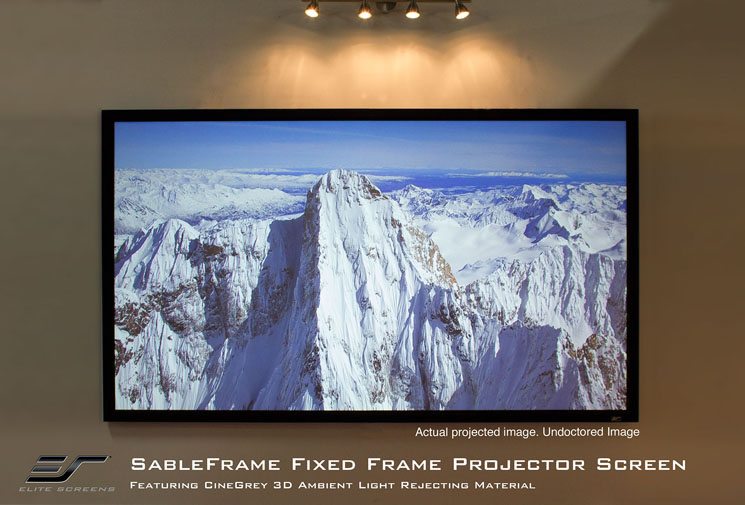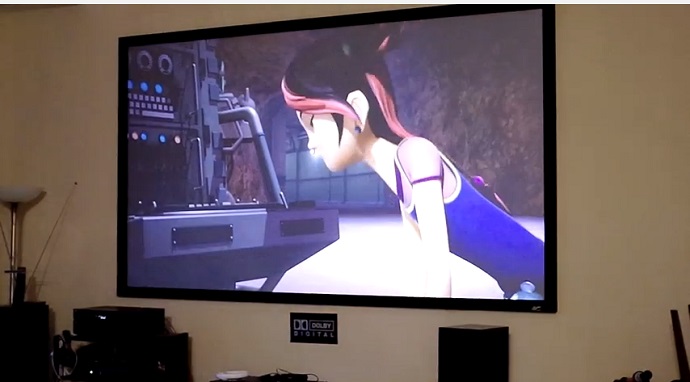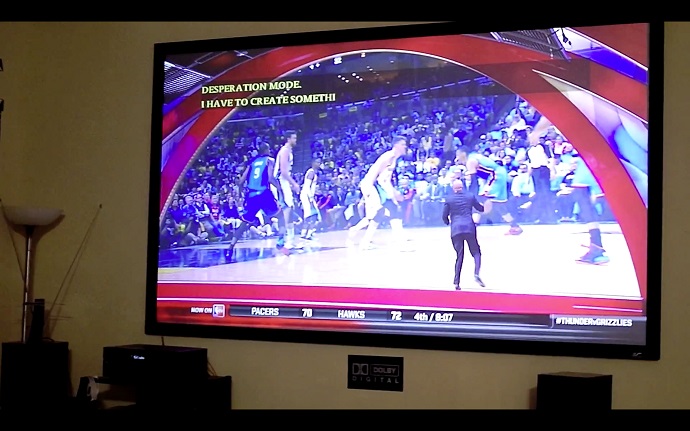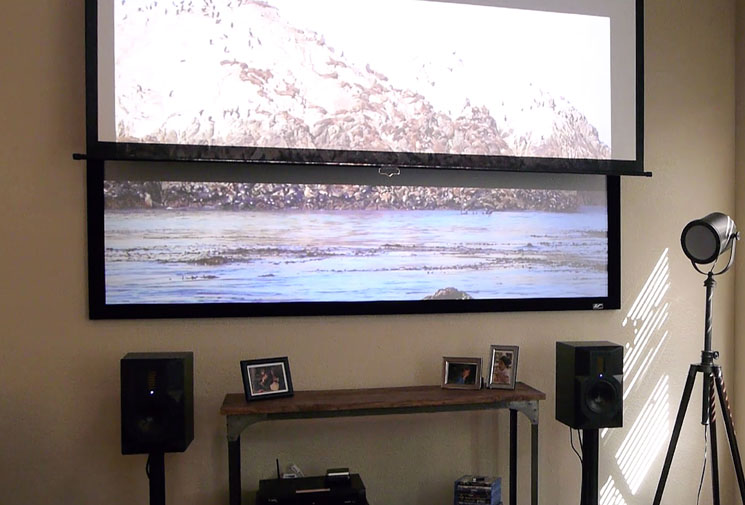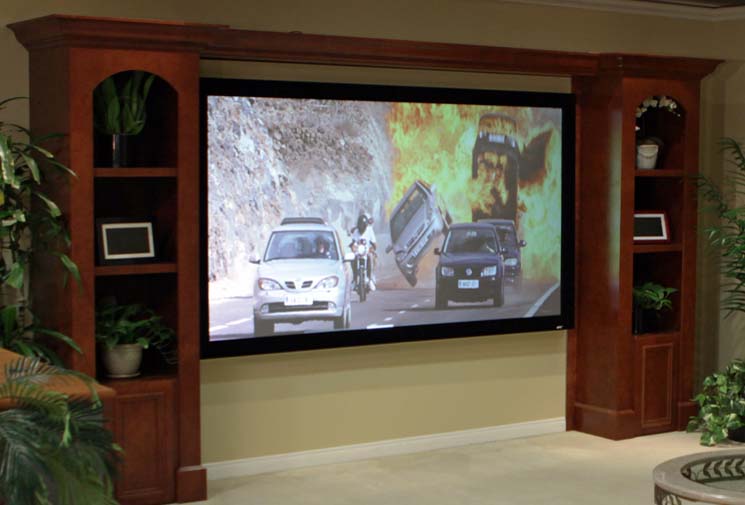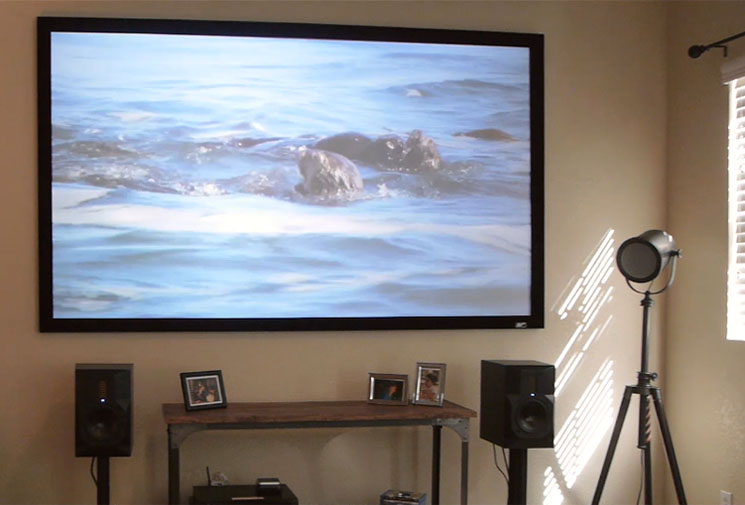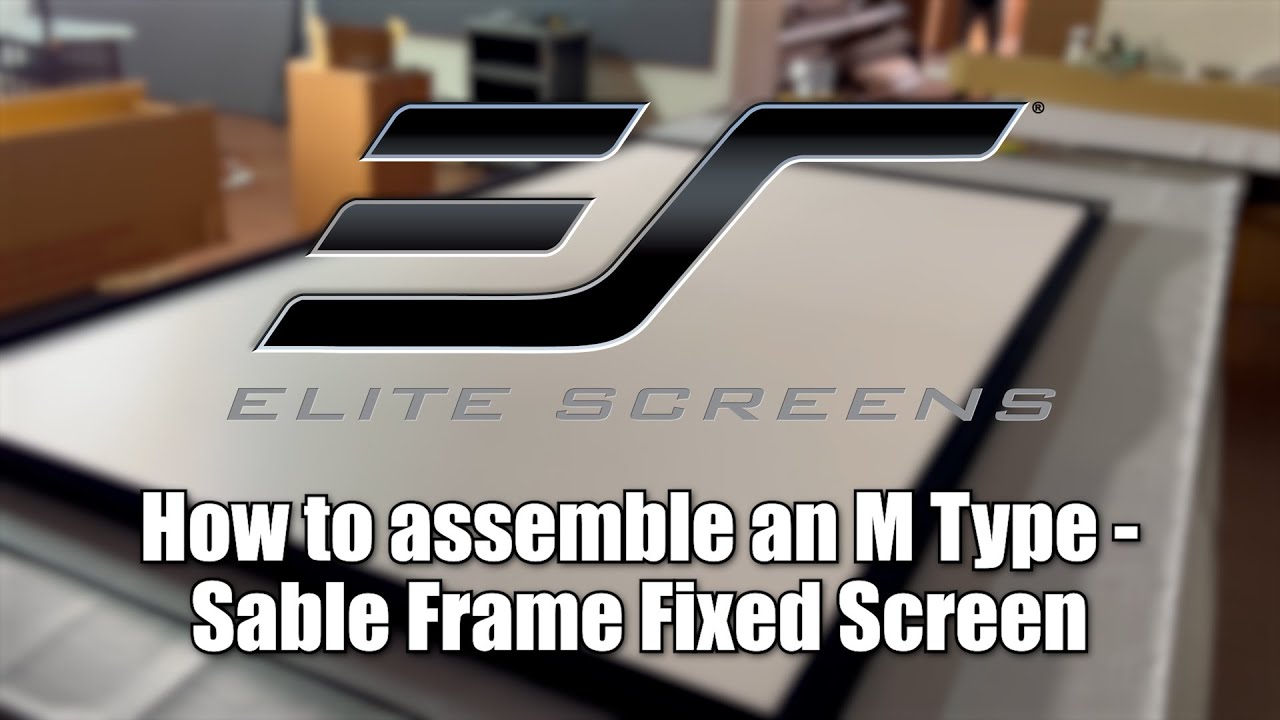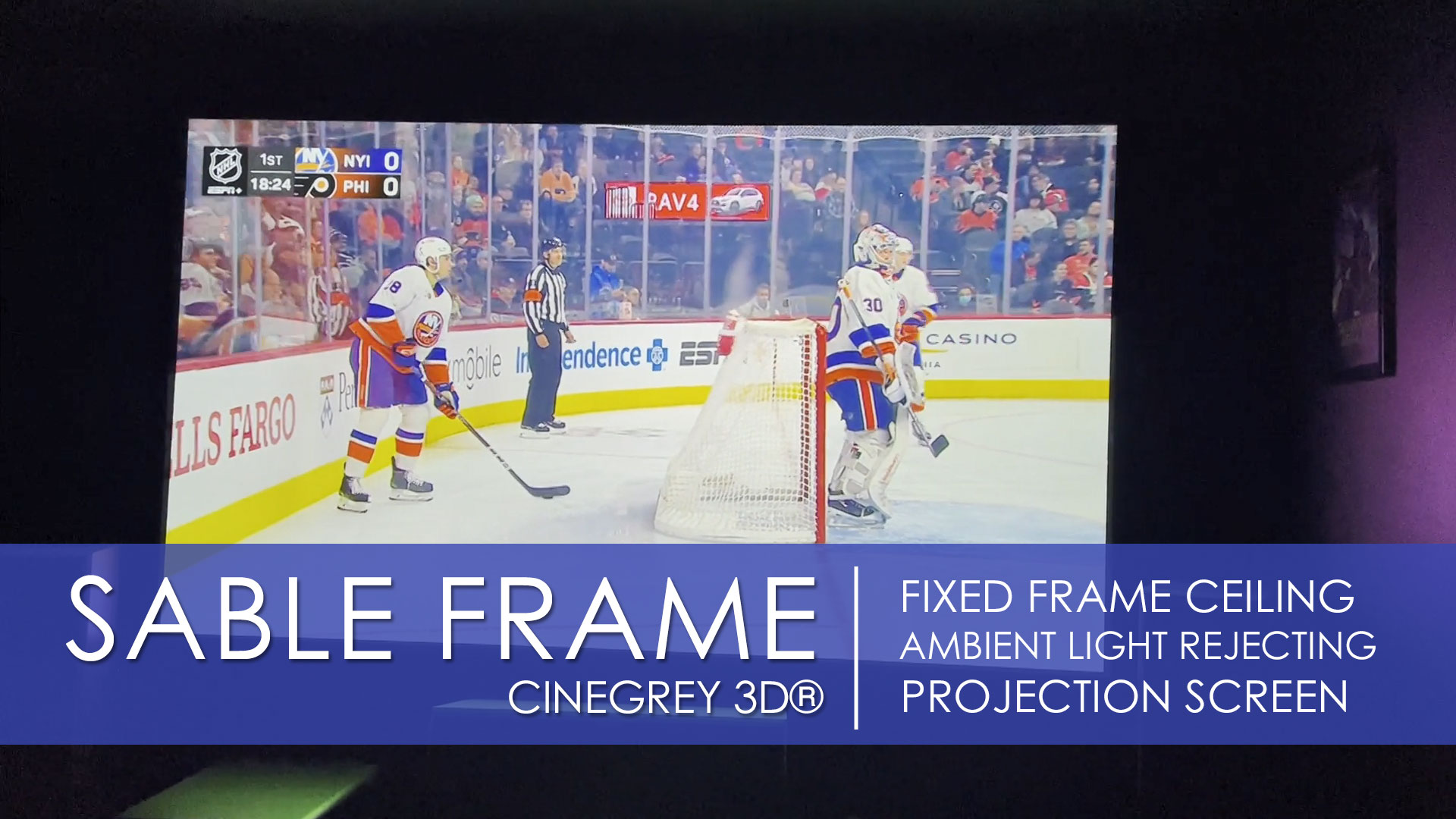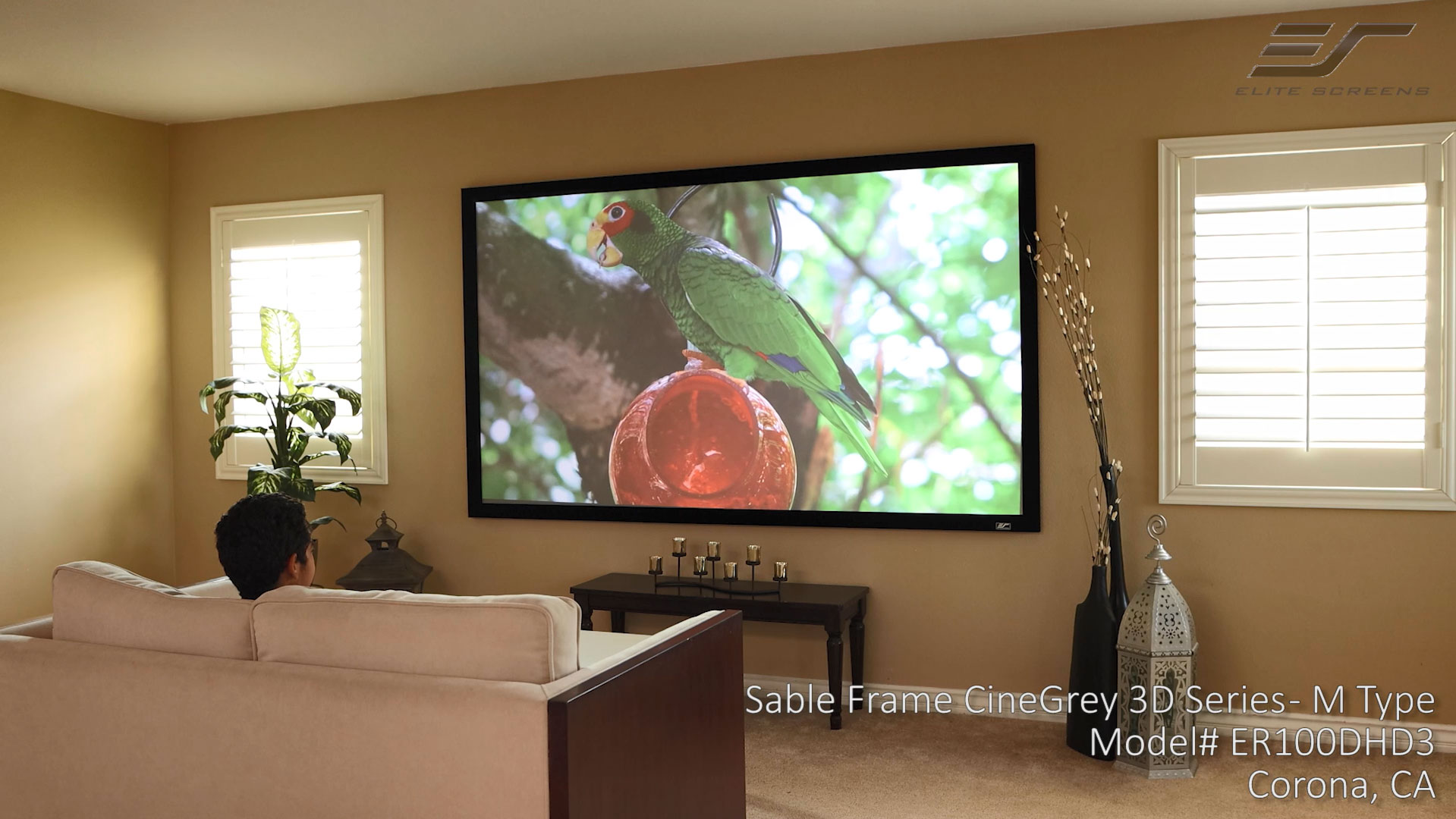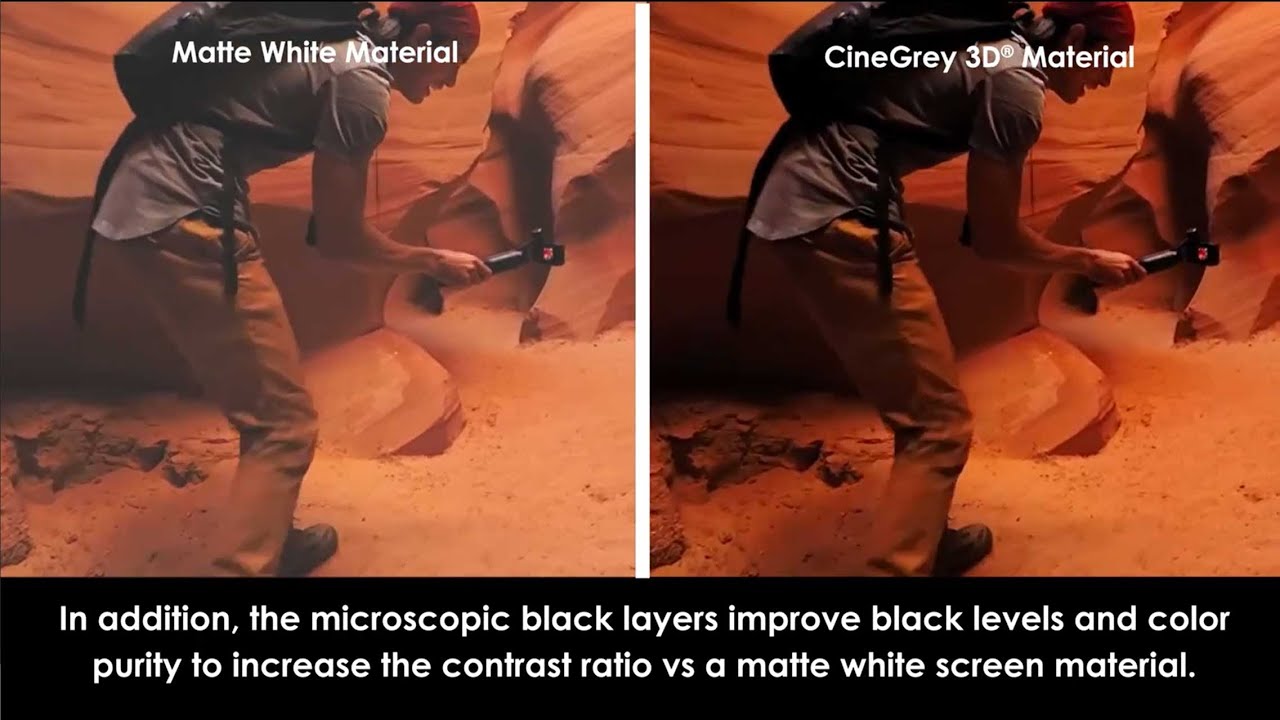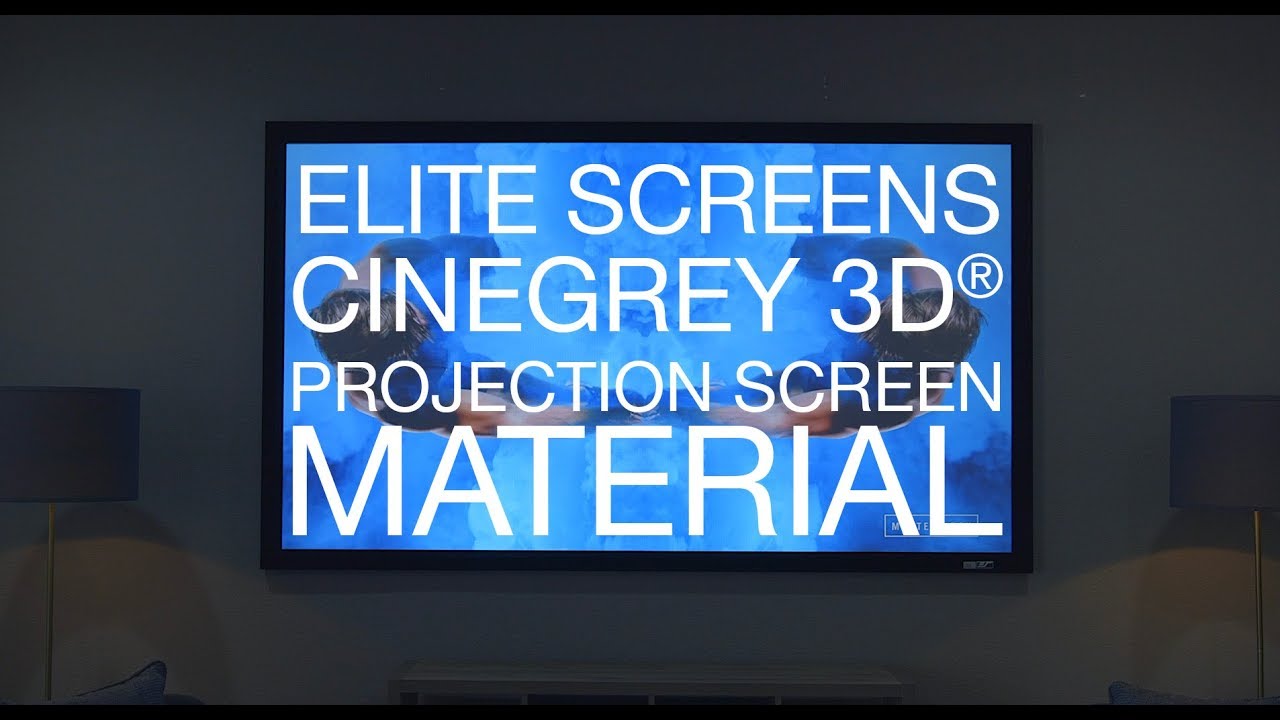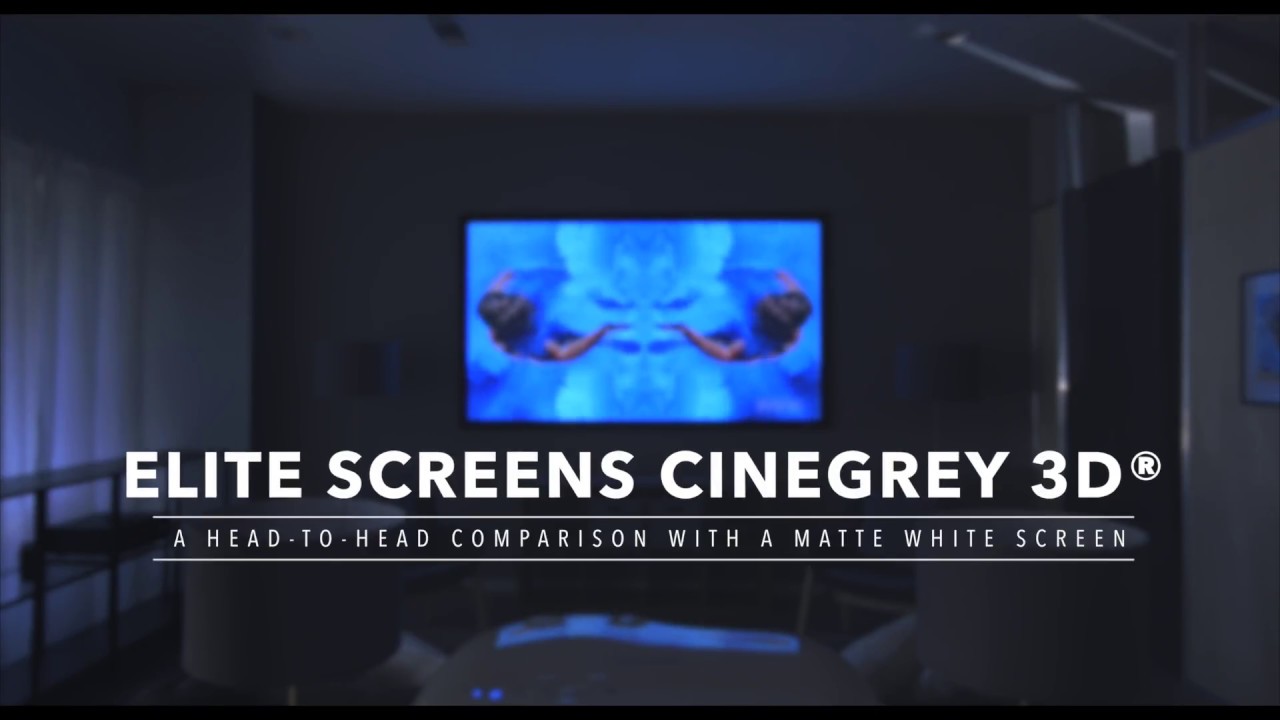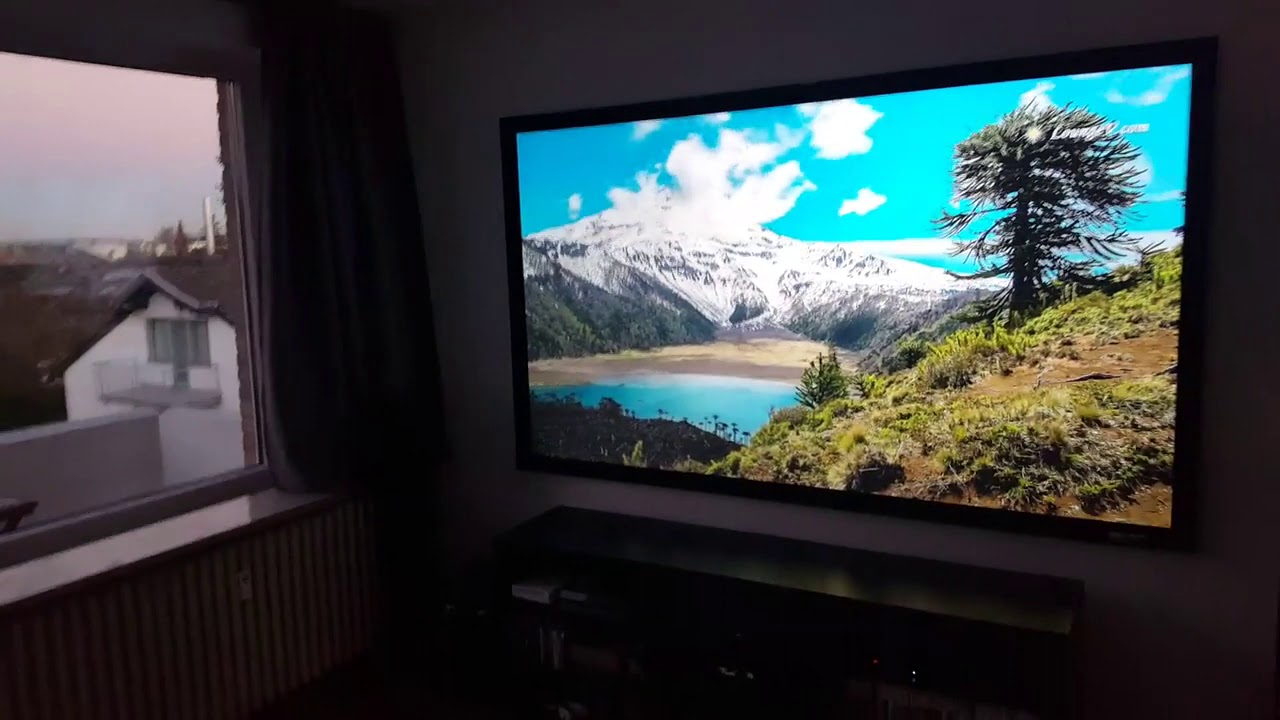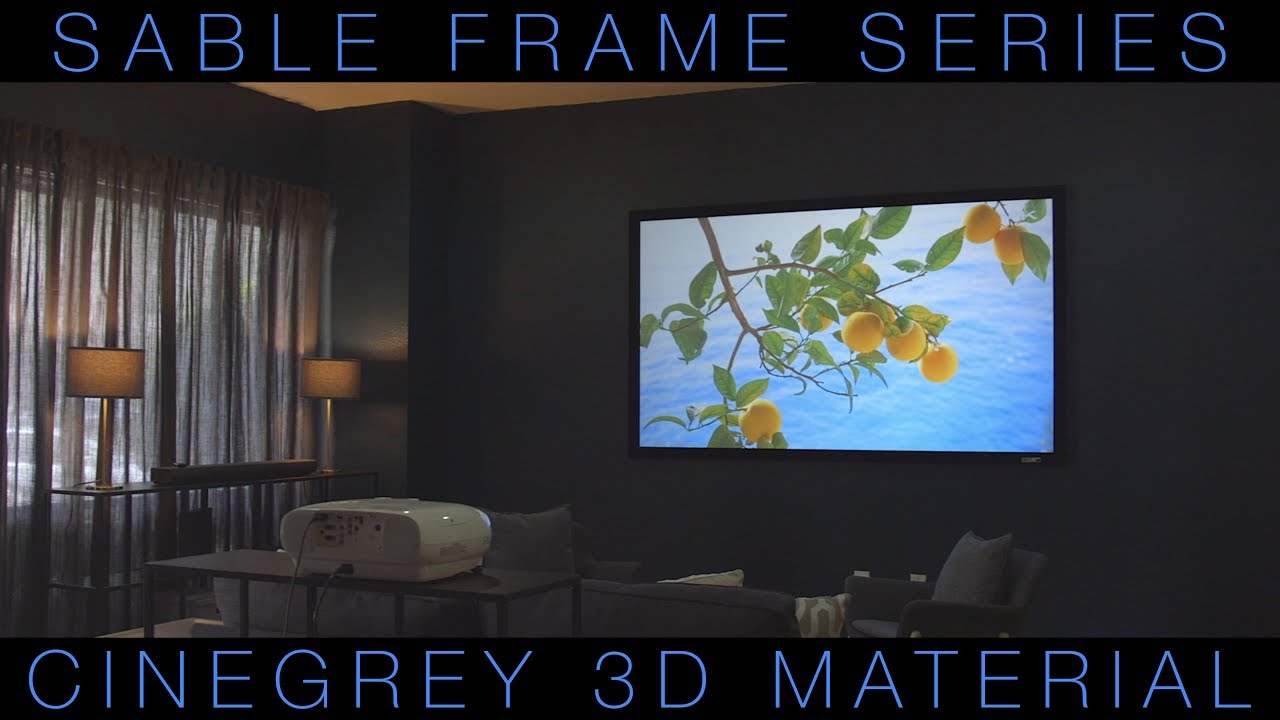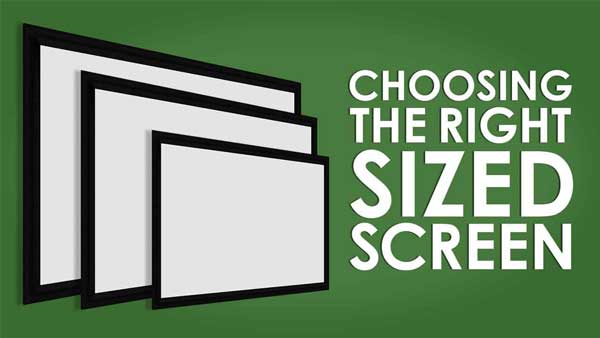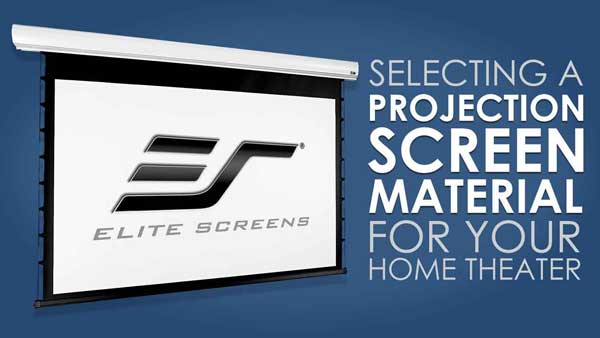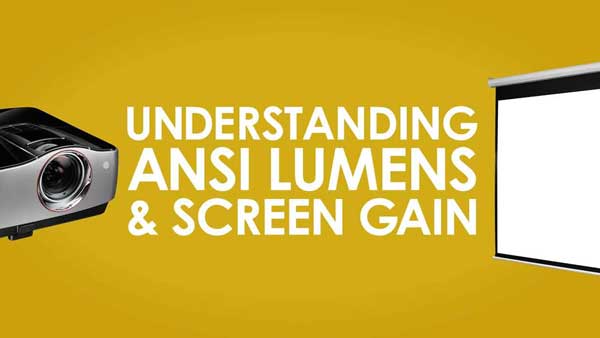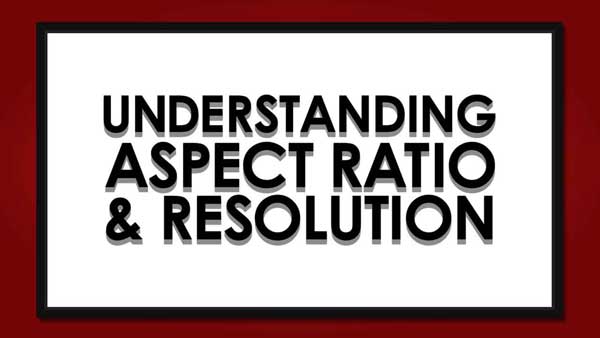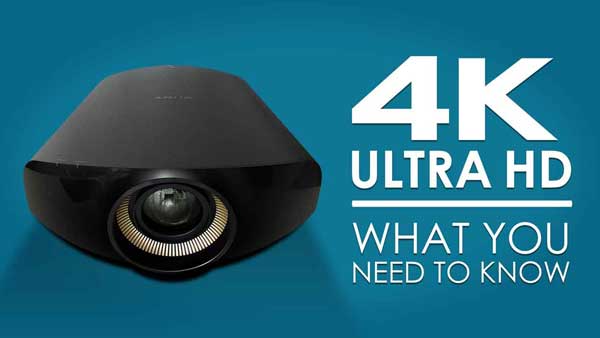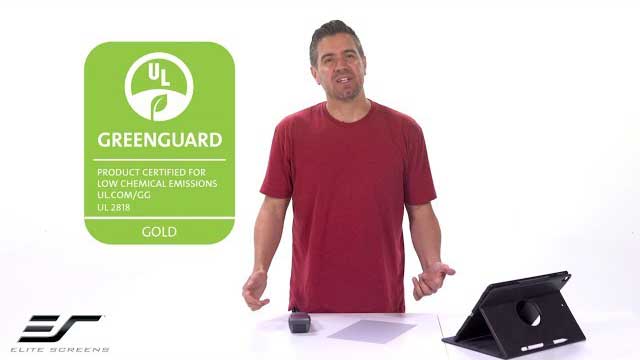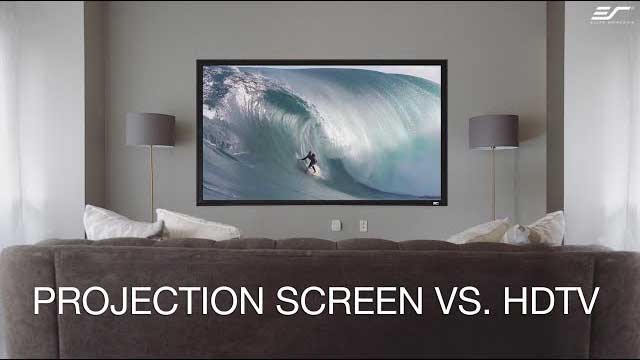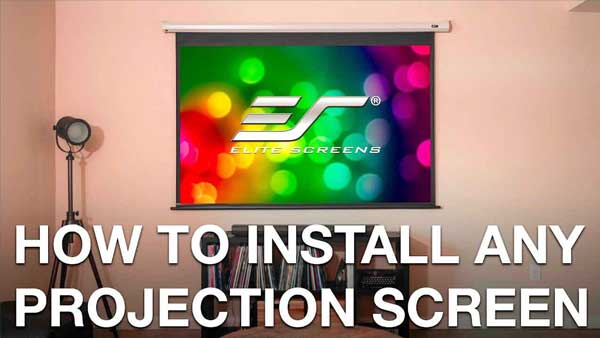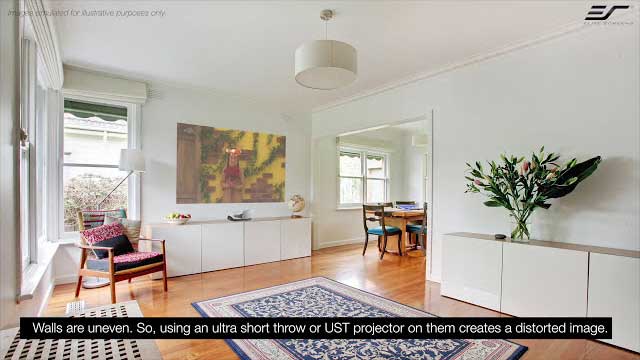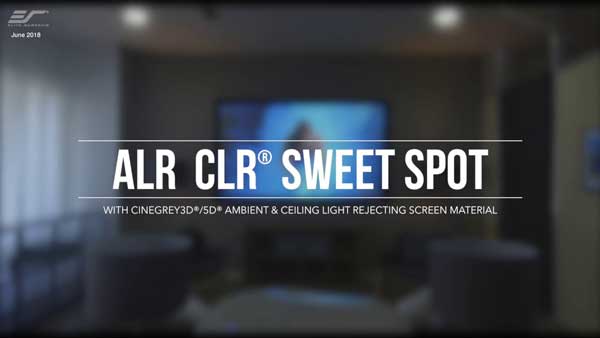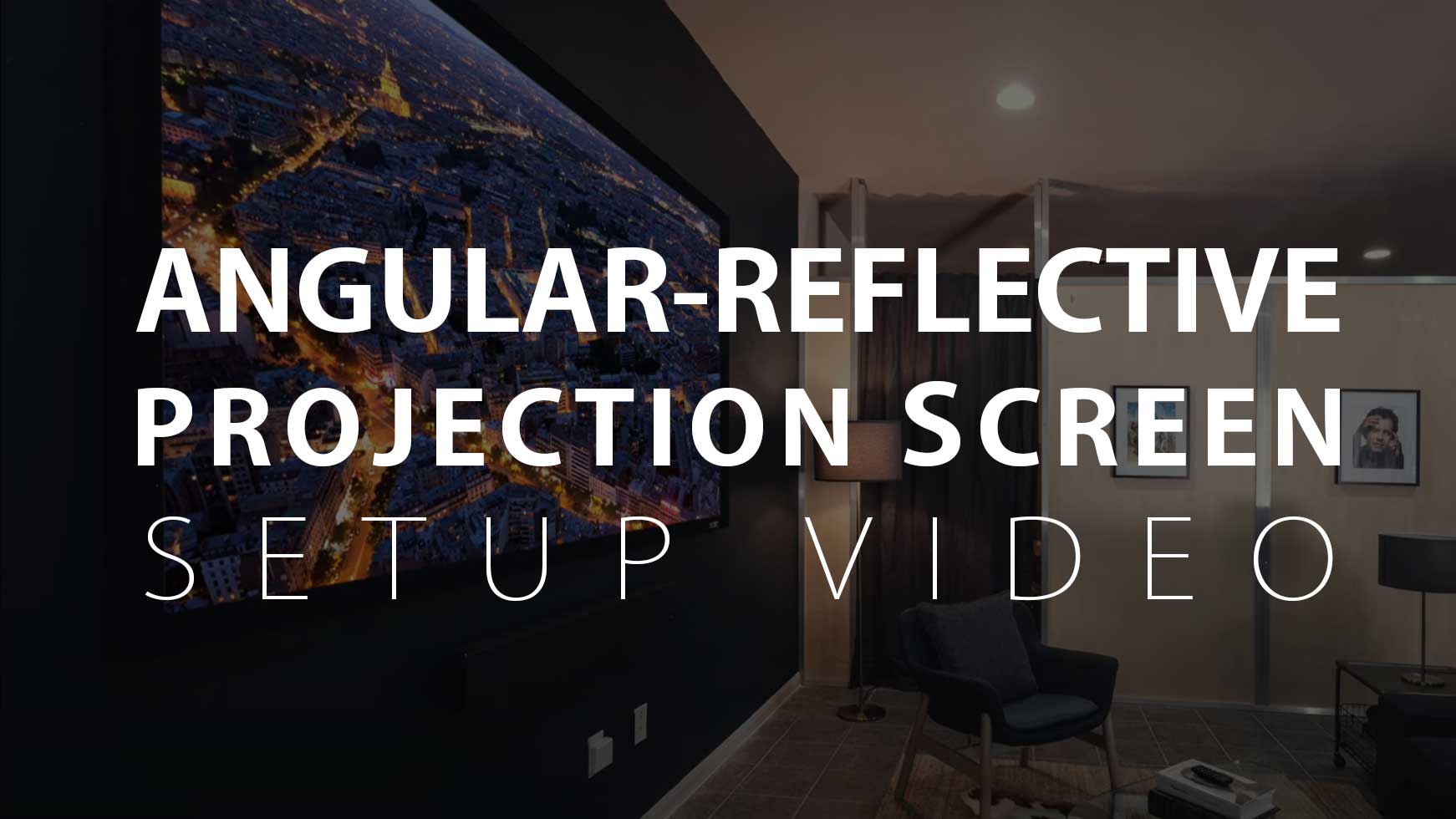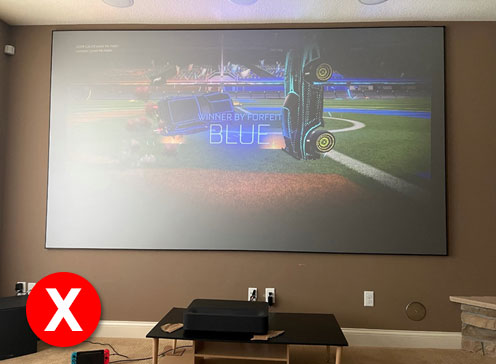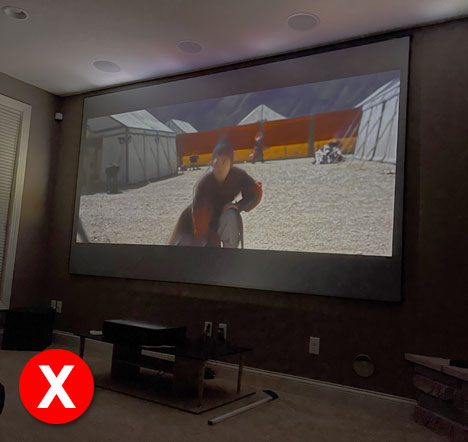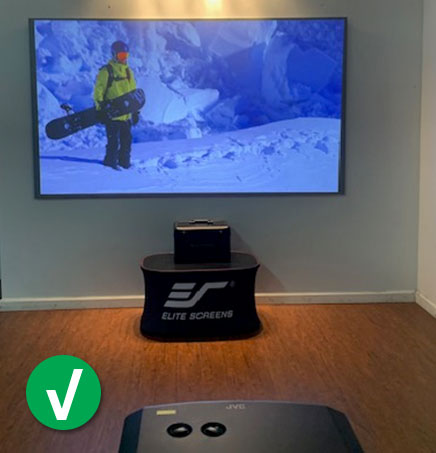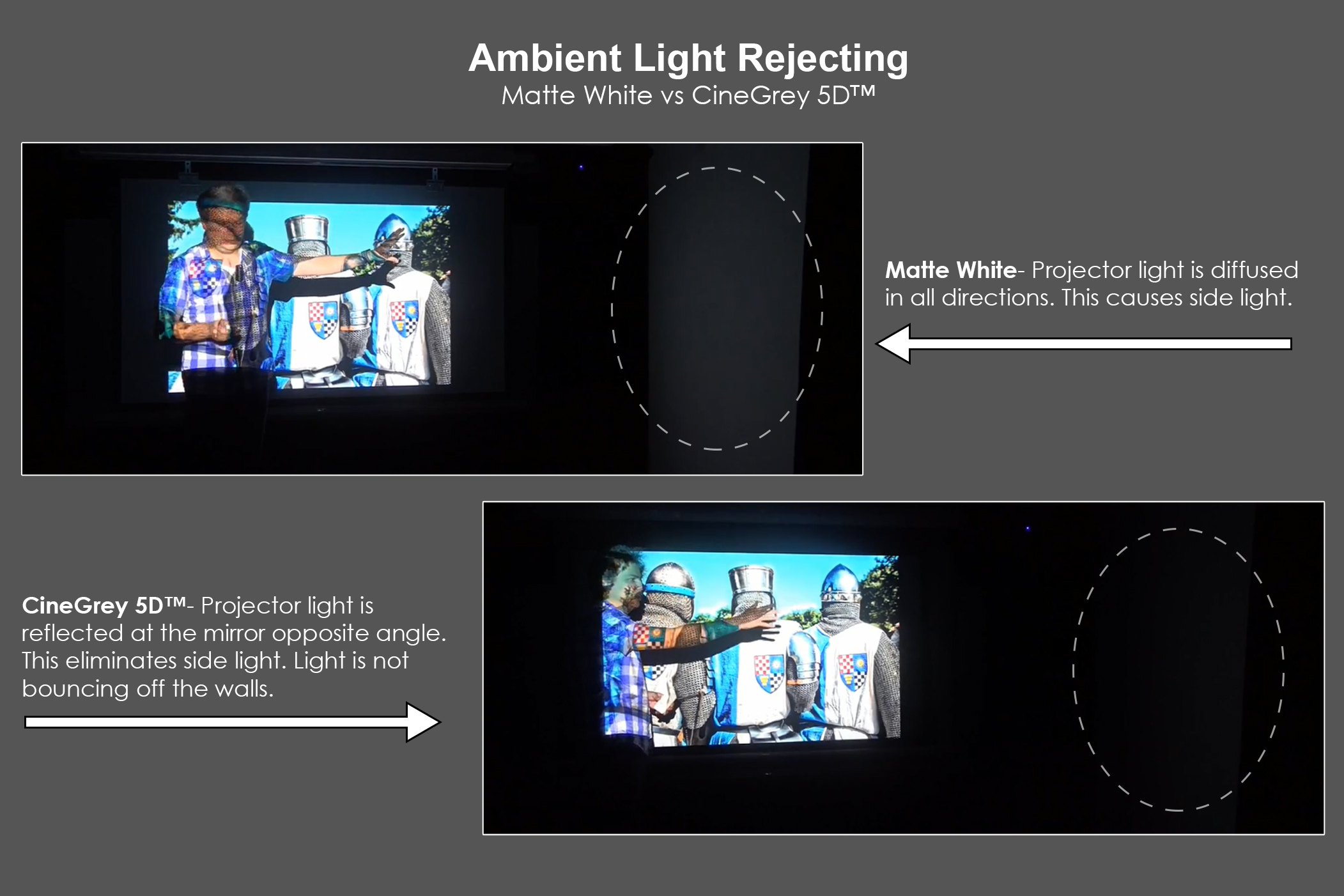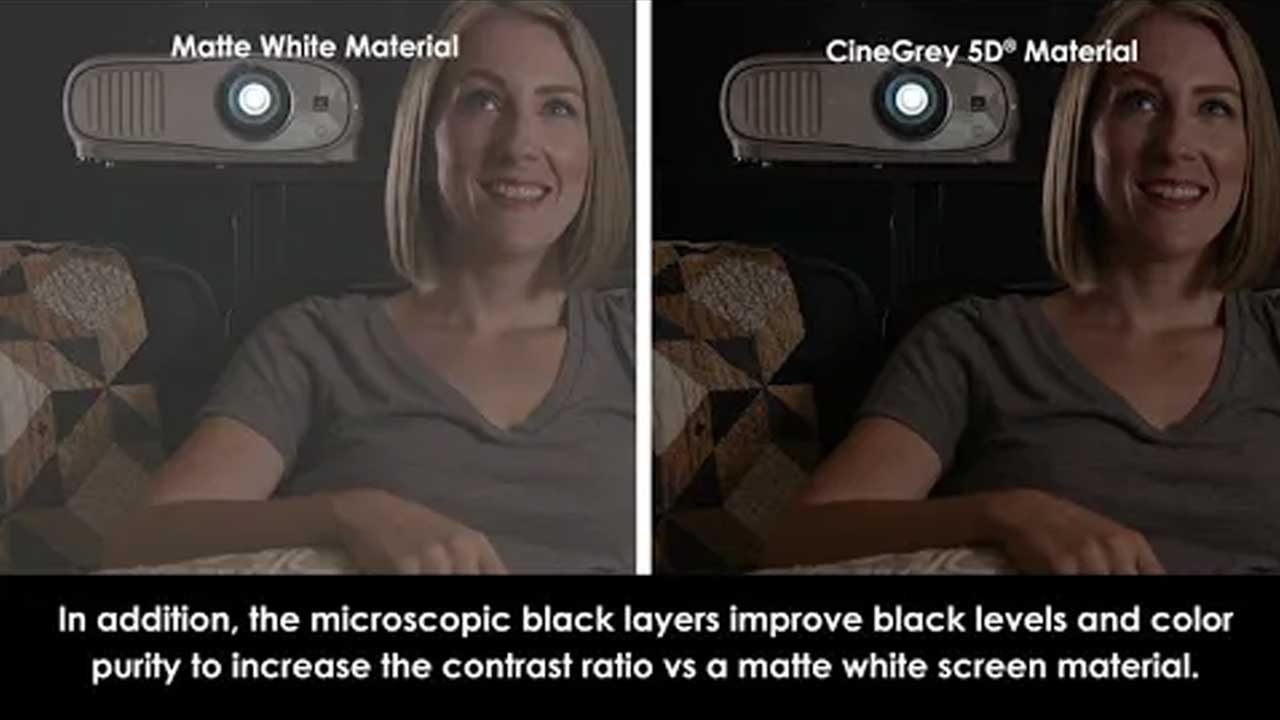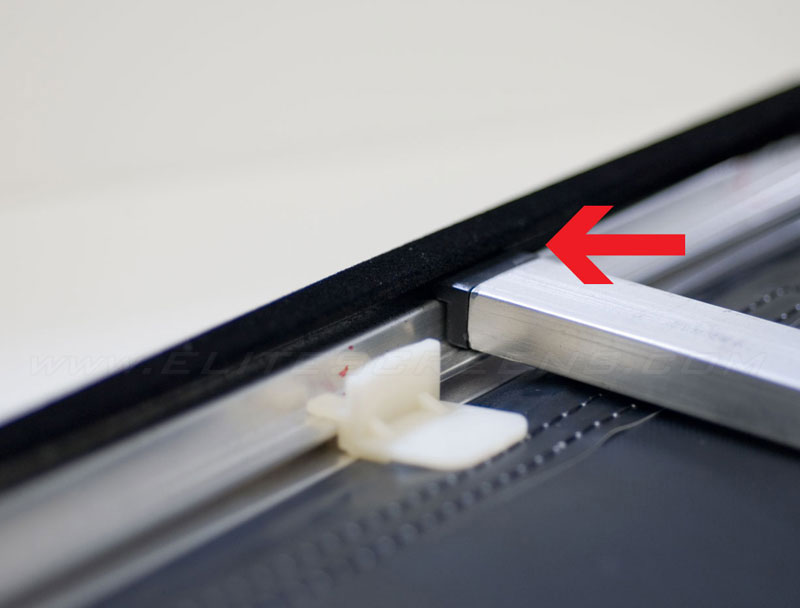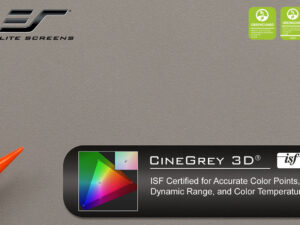CineGrey® 3D ALR /CLR® Fixed Frame Projection Screen
Sable Frame CineGrey 3D® Series
The CineGrey 3D® is an angular reflective front projection material designed to reject ambient light while maintaining superb picture quality. The CineGrey 3D® is the perfect solution for rooms that have little or no control over incidental light. This means that it’s an ideal fit for family rooms as well as lecture halls, boardrooms, sports bars, training facilities, and other business environments. In addition, the CineGrey 3D® increases projector brightness 1.2 times the amount. This is perfect for low lumens output projectors!
The CineGrey 3D® is superior to traditional white or gray materials in its ability to maintain a sharp, bright image regardless of ambient light. The angular reflective material incorporates a diffusion layer over a high reflective surface. This causes direct light from the projector to reflect squarely into the viewer’s field of vision while the outer contrast layer enhances image quality while absorbing indirect ambient light.
Screen Material
- 1.2 Gain Polarized 3D material
- Angular Reflective CLR®/ALR Front Projection Material for Standard Long Throw Projectors.
- (NOT Compatible with Ultra/Short Throw Projectors)
- ISF Certified for accurate color points, color temperature and dynamic range
- Contrast enhancement and superb color balance
- Ambient Light Rejecting – Counters wash-out effect from ambient light
- Active 3D, 4K Ultra HD, and HDR Ready
- Lower cost than higher end matte white or gray screen products
- Available in the following diagonal sizes:
- 100″, 110″, 120″, 135″, and 150″ in 16:9 format
Design and Installation
- Black velvet surfaced covered 2.36″ aluminum frame enhances overall appearance and absorbs projector light overshoot
- Easy to assemble and install in minutes
- Adjustable fix plates provide equal tension over the entire projection surface
- Sliding wall brackets allow screen to slide horizontally for properly centered installation.
- Installation kit includes: sliding wall brackets, drywall anchors, and screws.
Quality and Reliability
- GREENGUARD® and GREENGUARD® Gold Certified | UL 2818
- Flame Retardant – Complies with NFPA 701 Standards
- 2-year limited warranty, and 3-year warranty for ENR-G – Education, Non-profit, Religious and Government/Military organizations
- Lifetime Tech Support by Elite Screens Professional Service Team through Email, Phone or Online Form.
Dimensions
User Guides
- User Guide (PDF)
- User Guide – Spring Type (PDF) – DISCONTINUED
- User Guide – M Type V3.1 (PDF) – Rods/Spring
Comparison Tables
- CLR®/ALR Materials Comparison
- CineGrey 3D® / 4D / 5D® Comparison Table
- Fixed Frame Comparison Table
- ALR/CLR® Fixed Frame Comparison Table
- Ambient Light Rejecting Screens Comparison Table
Others
- Please click here for installation tip (PDF)
2-year limited warranty, and 3-year warranty for ENR-G – Education, Non-profit, Religious and Government/Military organizations
Lifetime Tech Support by Elite Screens Professional Service Team through Email, Phone or Online Form.

